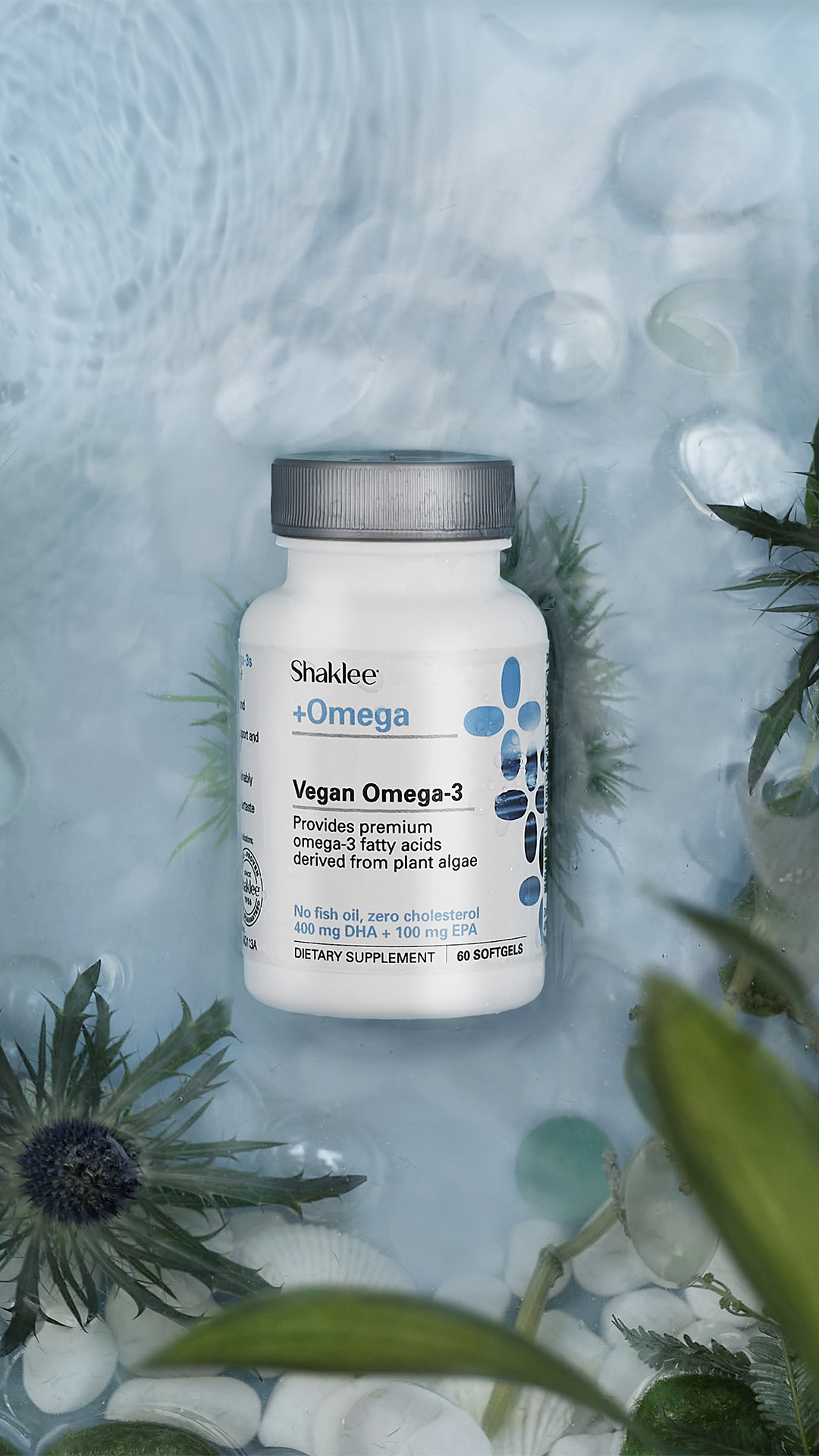
22 Feb How Vegans and Carnivores Can Both Benefit from Omega-3s
Shaklee Vegan plant based omega-3.s from marine algae is finally here!
I personally am so excited to be able to now have an offering for all my Vegan friends. Heart health is good for everyone, no matter your age, genetics, or lifestyle. And one critical topic is eating for your heart’s health. There are many nutrients that your ticker needs, but one nutrient is absolutely essential. And it is also essential for more than just your heart. This nutrient is omega-3 fatty acids. Omega-3 fatty acids are composed of three types: ALA, DHA, and EPA. All three are important for our health.
How much omega-3s should you get?
- The guidelines are a little unclear as to how much total omega-3s as a whole you need in your diet. Because of that, there hasn’t been an official recommendation given, but the World Health Organization recommends a minimum of 250–500 mg combined EPA and DHA each day for healthy adults (1), and a maximum of 3000 mg per day according to the FDA. And for ALA, the recommendation is 1600 mg for men 1100 mg for women. (2)
What makes omega-3s so great?
- Many things, but for one this is that they are “essential.” An “essential” nutrient means that due to their composition, the body can’t make them on its own, so we need to get them from dietary sources. And these fatty acids support the body to do many important things, including rebuilding key cells, so it is important that we get sources of them regularly, every day if possible.
DHA and EPA throughout our lifespan:
- DHA and EPA serve us from the day we are a few tiny cells to when we are gray. In our younger years, these omega-3s support our critical development, including brain, nerves, eyes, and immune functions. And then as we grow, these have been linked to many aspects of cardiovascular function, including reducing inflammation, the buildup on artery walls, the likelihood of major heart events, and improving our blood health. They have shown promise to support maintaining a healthy weight and, finally, improving brain function in those with very mild Alzheimer’s disease. (3)
Sources of omega-3s:
- Fish and seafood have the highest doses of omega-3 fatty acids. You want to choose deep-colored fish like salmon, mackerel, bluefin tuna, and herring. But any fish is better than no fish.
- These deep-colored choices can have up to 1500 mg of fatty acids, but most fish can have even as little as 200 mg. Unless you are eating deep-colored fish regularly (at least 2 times a week), then you likely are not getting enough omega-3s.
- Small amounts in seeds and nuts, like flaxseed and walnuts
- Trace amounts in dairy and eggs: This is naturally occurring when the animals are fed an omega-3-enriched diet
But where do the fish get the omega-3s?
- Fish get omegas from the original and very small source, microalgae. The microalgae are then eaten by phytoplankton. When fish eat phytoplankton that consumed the microalgae, omega-3s accumulate in their tissues.
So, what do you do if you aren’t getting enough omegas from your diet? (which is likely most of us)
- Taking an omega supplement is a no-stress way to go. I love taking my omega oils every day so that I can feel confident in my choice for my heart’s health.
- Are you vegan and can’t take an omega supplement sourced from fish? Remember I mentioned the original source of omegas, the microalgae? Great news, we now have a sustainably sourced microalgae omega-3 supplement that is vegan.
If you aren’t eating at least two hearty portions of fish each week (and more if your fish choices aren’t as dense in omegas) or if you are vegetarian or vegan, consider the densest source of omegas you can find, a daily omega-3 supplement. As with any supplement, make sure you discuss your individual considerations with your health care professional.
This post appeared first on Shaklee Corporation.
